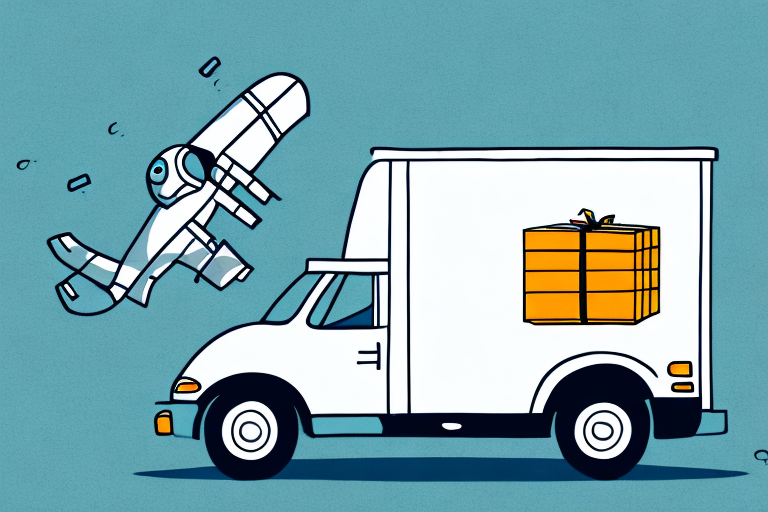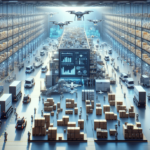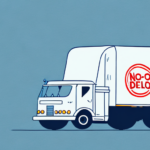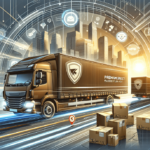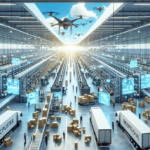What Does No-Contact Delivery Mean? Exploring the Benefits and Risks of This Delivery Option
In the wake of the COVID-19 pandemic, no-contact delivery has surged in popularity as customers seek safer methods to receive their orders. But what exactly does no-contact delivery entail, and what are the benefits and risks associated with this delivery option? This article delves into the comprehensive aspects of no-contact delivery, providing detailed insights and up-to-date information.
How No-Contact Delivery Works: A Step-by-Step Guide
No-contact delivery is a service model that allows customers to receive their orders without direct interaction with the delivery driver. Instead of handing the order directly to the customer, the driver leaves the package at a designated location, such as the doorstep, lobby, or reception area.
Step-by-Step Process
- Order Placement: The customer places an order online or via phone and selects no-contact delivery as the preferred option.
- Order Preparation: The merchant prepares the order, ensuring it is securely packaged, often using tamper-evident packaging.
- Delivery Dispatch: The delivery driver picks up the order and proceeds to the customer's location.
- Arrival Notification: Upon arrival, the driver notifies the customer via phone or text message.
- Order Placement: The driver leaves the order at the specified location and takes a photo as proof of delivery.
- Confirmation: The driver sends a final notification to the customer confirming delivery.
This streamlined process minimizes physical contact, enhancing safety for both customers and delivery personnel.
The Rise of No-Contact Delivery: Why It's Becoming More Popular
The surge in no-contact delivery services can be attributed primarily to the COVID-19 pandemic, which heightened awareness around health and safety. According to a Statista report, the use of no-contact delivery increased by over 50% in 2020 compared to the previous year.
Changing Customer Behavior
Consumers have become more cautious about in-person interactions, driving demand for safer delivery alternatives. The convenience factor also plays a significant role, as no-contact delivery allows customers to receive orders without disrupting their daily routines.
Business Adaptation
Businesses have adapted to these changing preferences by integrating no-contact delivery options into their service offerings, ensuring continuity during lockdowns and beyond.
Contactless Delivery vs. Traditional Delivery: Which is Safer?
When evaluating safety, no-contact delivery offers distinct advantages over traditional delivery methods. By eliminating face-to-face interactions, it reduces the potential transmission pathways for viruses and bacteria.
Benefits of No-Contact Delivery
- Minimized physical interaction lowers the risk of disease transmission.
- Enhanced sanitization reduces contamination risks.
- Increased convenience for both customers and delivery personnel.
Safety Measures in Traditional Delivery
While traditional delivery involves direct contact, safety can be maintained through measures such as mask-wearing, hand sanitization, and maintaining physical distance during the delivery process.
Benefits of No-Contact Delivery for Customers and Delivery Drivers
No-contact delivery offers a range of benefits catering to both customers and delivery personnel:
For Customers
- Safety: Reduces exposure to potential health risks.
- Convenience: Flexible delivery times and locations.
- Efficiency: Faster delivery times due to streamlined processes.
For Delivery Drivers
- Health Protection: Lower risk of contracting illnesses.
- Job Security: Continues to provide employment opportunities during pandemics.
- Operational Efficiency: Ability to handle more deliveries with reduced wait times.
The Impact of COVID-19 on the Adoption of No-Contact Delivery
The COVID-19 pandemic has been a catalyst in the widespread adoption of no-contact delivery services. According to a National Retail Federation report, online food delivery saw a year-over-year growth of 20% in 2021, driven largely by the demand for no-contact options.
Social Distancing Requirements
No-contact delivery facilitates adherence to social distancing guidelines, a crucial measure in controlling the spread of COVID-19.
Continued Relevance Post-Pandemic
Even as pandemic restrictions ease, the preference for no-contact delivery is expected to persist, influenced by established customer habits and ongoing health considerations.
How Restaurants and Food Services are Implementing No-Contact Delivery
Restaurants and food service providers have adopted various strategies to implement no-contact delivery effectively:
Online Ordering Systems
Enhanced online platforms allow customers to place orders seamlessly, selecting no-contact delivery as an option.
Contactless Payment Methods
Incorporating digital payment solutions reduces the need for physical currency exchanges, further minimizing contact.
Specialized Packaging
Using tamper-evident and insulated packaging ensures food remains safe and maintains quality during transit.
Third-Party Delivery Partnerships
Collaborations with delivery services like Uber Eats, Grubhub, and DoorDash expand reach and leverage their expertise in contactless delivery.
Best Practices for Ordering and Receiving No-Contact Deliveries
To maximize the benefits and ensure safety, consider the following best practices when utilizing no-contact delivery services:
- Select a Safe Drop-off Location: Choose a visible and secure area for the delivery.
- Provide Clear Instructions: Specify exact locations or instructions for the driver.
- Opt for Contactless Payments: Use digital payment methods to reduce handling cash.
- Maintain Hygiene: Wash hands thoroughly after handling deliveries.
Tracking Your Order
Utilize real-time tracking features offered by many delivery services to monitor your order's progress and prepare for its arrival.
Inspecting Orders
Upon receipt, promptly check the contents for accuracy and quality, and report any discrepancies or issues to the delivery service.
Addressing Concerns about No-Contact Delivery: What You Need to Know
While no-contact delivery is generally safe, customers may have specific concerns that need addressing:
Risk of Theft or Damage
To mitigate risks of theft or damage, businesses often provide delivery confirmations and allow customers to choose specific drop-off locations. Some platforms offer insurance or guarantees for delivered items.
Privacy Considerations
Ensuring that delivery procedures respect customer privacy, such as not sharing personal details beyond what is necessary for delivery.
Reliability of Delivery Services
Choosing reputable delivery partners with proven track records can enhance trust and reduce the likelihood of delivery mishaps.
The Future of Food Delivery: Will No-Contact Continue to Thrive Beyond the Pandemic?
No-contact delivery is poised to remain a significant aspect of the food delivery industry even after the pandemic. The convenience and safety it offers align with evolving consumer preferences and health consciousness.
Long-Term Consumer Habits
Many consumers have integrated no-contact delivery into their regular ordering habits, appreciating the efficiency and peace of mind it provides.
Technological Advancements
Innovations in delivery technology, such as automated delivery systems and improved tracking, will further enhance the viability and popularity of no-contact delivery.
Ongoing Health Considerations
With heightened awareness around health and hygiene, the preference for no-contact delivery is likely to persist as part of broader societal shifts towards safer consumer interactions.
In conclusion, no-contact delivery has transformed the way goods and services are delivered, offering a safer and more convenient alternative that is adaptable to both current and future consumer needs. As the industry continues to evolve, no-contact delivery is expected to remain a staple in the delivery landscape.













